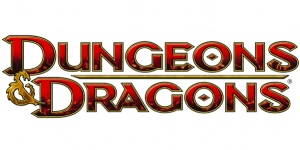Difference between revisions of "Massively Multiplayer Online Game (MMOG)"
| Line 1: | Line 1: | ||
| + | {{Nav-Bar|Topics##}}<br> | ||
'''A Multiplayer Game''' is a video game which often involves simultaneous play in the same game environment by more than one player through a shared interface or platform. A multiplayer game is often played over a [[Wikipedia: Wide_area_network | wide area network (WAN)]]. They are commonly hosted via a multiplayer server on the [[Wikipedia: Internet | Internet]] where players can connect and play together. Multiplayer games can also be played over a [[Wikipedia: Local_area_network | local area network (LAN)]], however, this requires the players to be physically in the same location with their devices connecting to the same network. The number of players also ranges depending on the genre of the game and the type of network they are connected to. Multiplayer games that are hosted via [[Wikipedia: Local_area_network | LAN]] usually only allows 2 to 4 players, whereas most games hosted via [[Wikipedia: Wide_area_network | WAN]] can support between 5 to 50 players simultaneously, and even up to thousands of players for [[MMORPGs | MMORPGs]] games. | '''A Multiplayer Game''' is a video game which often involves simultaneous play in the same game environment by more than one player through a shared interface or platform. A multiplayer game is often played over a [[Wikipedia: Wide_area_network | wide area network (WAN)]]. They are commonly hosted via a multiplayer server on the [[Wikipedia: Internet | Internet]] where players can connect and play together. Multiplayer games can also be played over a [[Wikipedia: Local_area_network | local area network (LAN)]], however, this requires the players to be physically in the same location with their devices connecting to the same network. The number of players also ranges depending on the genre of the game and the type of network they are connected to. Multiplayer games that are hosted via [[Wikipedia: Local_area_network | LAN]] usually only allows 2 to 4 players, whereas most games hosted via [[Wikipedia: Wide_area_network | WAN]] can support between 5 to 50 players simultaneously, and even up to thousands of players for [[MMORPGs | MMORPGs]] games. | ||
| − | + | Contents | |
| + | 1 Section [1] | ||
| + | 1.1 Subsection [1.1] | ||
| + | 2 Section [2] | ||
| + | 2.1 Subsection [2.1] | ||
| + | 3 Section [3] | ||
| + | 3.1 Subsection [3.1] | ||
| + | 3.1.1 Subsubsection [3.1.1] | ||
| + | 3.1.2 Subsubsection [3.1.2] | ||
==History== | ==History== | ||
[[File:DnDlogo.jpg|300px|thumb|right| Dungeons & Dragons' logo; typically abbreviated as D&D, it was originally designed by Gary Gygax and Dave Arneson while being published by Tactical Studies Rules, Inc. in 1974.]] | [[File:DnDlogo.jpg|300px|thumb|right| Dungeons & Dragons' logo; typically abbreviated as D&D, it was originally designed by Gary Gygax and Dave Arneson while being published by Tactical Studies Rules, Inc. in 1974.]] | ||
| Line 15: | Line 24: | ||
[[category: Information Ethics]] | [[category: Information Ethics]] | ||
[[Category: Video Games]] | [[Category: Video Games]] | ||
| − | |||
| − | |||
Revision as of 20:47, 23 January 2023
A Multiplayer Game is a video game which often involves simultaneous play in the same game environment by more than one player through a shared interface or platform. A multiplayer game is often played over a wide area network (WAN). They are commonly hosted via a multiplayer server on the Internet where players can connect and play together. Multiplayer games can also be played over a local area network (LAN), however, this requires the players to be physically in the same location with their devices connecting to the same network. The number of players also ranges depending on the genre of the game and the type of network they are connected to. Multiplayer games that are hosted via LAN usually only allows 2 to 4 players, whereas most games hosted via WAN can support between 5 to 50 players simultaneously, and even up to thousands of players for MMORPGs games. Contents 1 Section [1] 1.1 Subsection [1.1] 2 Section [2] 2.1 Subsection [2.1] 3 Section [3] 3.1 Subsection [3.1] 3.1.1 Subsubsection [3.1.1] 3.1.2 Subsubsection [3.1.2]
History
Current MMORPGs are the result of many years of evolution. First coined in 1997, The origin of MMORPGs can be pointed back to the popular tabletop fantasy role-playing game “Dungeons & Dragons”.[1] Dungeons & Dragons involved assigning players a specific character, whose actions the player was in charge of[2]. Dungeons & Dragons influenced the creation of MUDs (Multi-User Dungeons), which were text-based role-playing games that allowed players to interact with each other through typing commands into the game interface. MUDs eventually developed into MMORPGs complete with graphics (ranging from 2-D to 3-D).
Types
MMORPGs can be grouped according to the method by which players pay for the game. “Pay-to-play” games require players to pay for the game itself, and then pay a monthly subscription fee for game play-time. Examples of pay-to-play games include World of Warcraft and Eve. “Free-to-play” games are games that do not require players to pay for either the game or their game play-time. An example of a free-to-play game is Runescape. Some free-to-play games like Runescape have options to pay a monthly fee in exchange for more features, or cash shops for improved items. Other games simply require an initial purchase of the game, and then players can play the game without continued mandatory expense.
References
- ↑ Bartle, Richard. “Summary MUD History.” LivingInternet. http://www.livinginternet.com/d/di_major.htm
- ↑ Mead, Lawrence. “Dungeons and Dragons.” Wizards. http://www.wizards.com/dnd/DnDArchives_FAQ.asp
